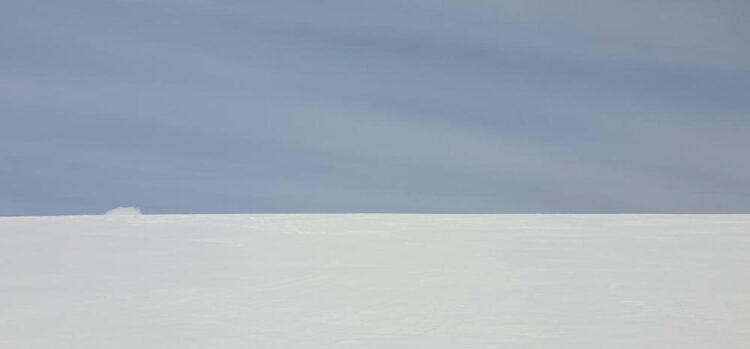Microplastics found in Europe’s largest ice cap

Microplastics have been found in Vatnajokull, Europe's largest ice cap.
Credit: Eirikur Sigurdsson
In a recent article in Sustainability, scientists from Reykjavik University (RU), the University of Gothenburg, and the Icelandic Meteorological Office describe their finding of microplastic in a remote and pristine area of Vatnajokull glacier in Iceland, Europe’s largest ice cap. Microplastics may affect the melting and rheological behaviour of glaciers, thus influencing the future meltwater contribution to the oceans and rising sea levels.
This is the first time that the finding of microplastic in the Vatnajökull glacier is described. The group visualised and identified microplastic particles of various sizes and materials by optical microscopy and μ-Raman spectroscopy.
The discussion about microplastics has mainly been focused on the contamination of the sea, but hitherto little research has been conducted on plastic in the earth’s ice caps. To date, microplastic particles have been found in the Italian Alps, in the Ecuadorian Andes and icebergs at Svalbard. According to Dr Hlynur Stefansson, Associate Professor at the RU Department of Engineering and first author of the article, understanding the distribution of microplastic and its short and long-term effects on the dynamics of ice is of vital importance.
The findings confirm that microplastic particles are distributed through the atmosphere. “We do not understand well enough the pathways for microplastic particles in our environment. Is the plastic carried by snow and rain? We need to know more about the causes. The samples we took are from a very remote and pristine location in Vatnajokull glacier, with no easy access, so direct pollution from human activity is unlikely,” Dr Stefansson says.
“We also need to know much more about the short and long-term effects of microplastic on the dynamics of the ice and if they contribute to the melting of glaciers. If that is the case, it will play a critical role in future meltwater contribution to the oceans and rising sea levels. The plastic particles degrade very slowly in the cold glacier environment and can accumulate and persist in the glaciers for a very long time. Eventually, however, they will be released from the ice, contributing to pollution in rivers and the marine environment. It is therefore very important to map and understand the presence and dispersal of microplastics in glaciers on a global scale.”
###
Microplastics in Glaciers: First Results from the Vatnajökull Ice Cap https:/
All latest news from the category: Ecology, The Environment and Conservation
This complex theme deals primarily with interactions between organisms and the environmental factors that impact them, but to a greater extent between individual inanimate environmental factors.
innovations-report offers informative reports and articles on topics such as climate protection, landscape conservation, ecological systems, wildlife and nature parks and ecosystem efficiency and balance.
Newest articles

Innovative 3D printed scaffolds offer new hope for bone healing
Researchers at the Institute for Bioengineering of Catalonia have developed novel 3D printed PLA-CaP scaffolds that promote blood vessel formation, ensuring better healing and regeneration of bone tissue. Bone is…

The surprising role of gut infection in Alzheimer’s disease
ASU- and Banner Alzheimer’s Institute-led study implicates link between a common virus and the disease, which travels from the gut to the brain and may be a target for antiviral…

Molecular gardening: New enzymes discovered for protein modification pruning
How deubiquitinases USP53 and USP54 cleave long polyubiquitin chains and how the former is linked to liver disease in children. Deubiquitinases (DUBs) are enzymes used by cells to trim protein…



